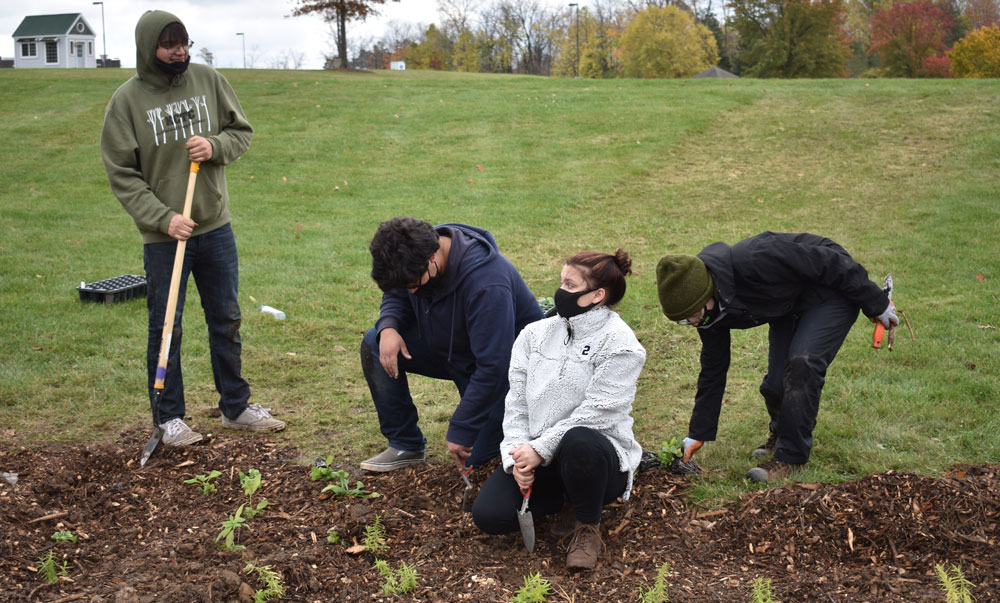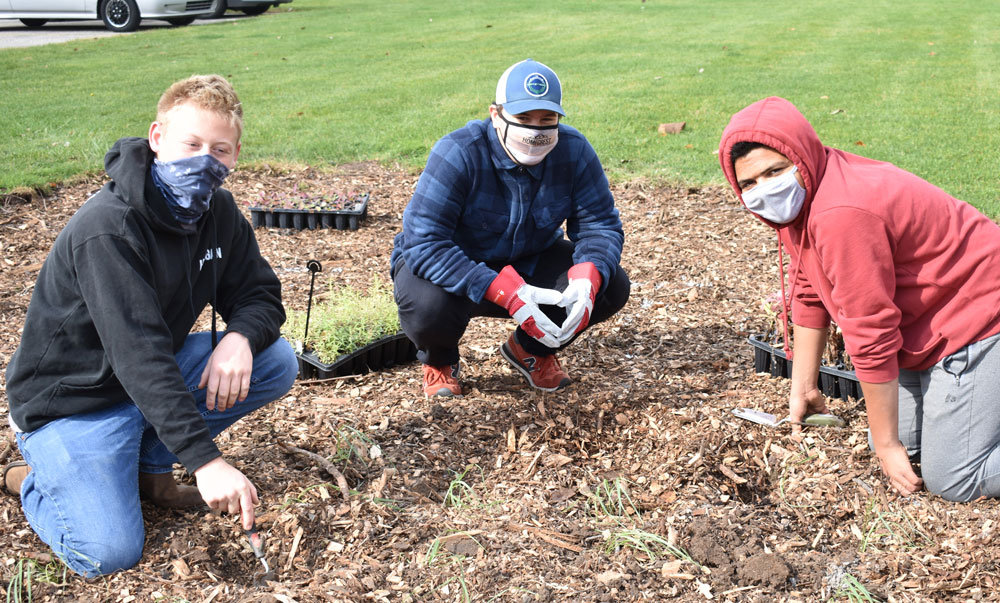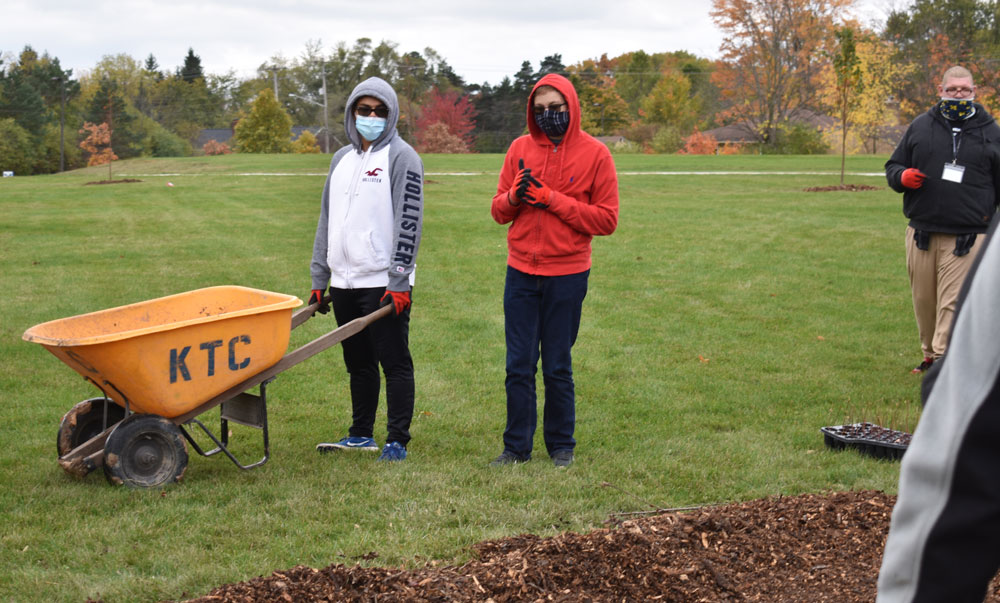Kent ISD — Spiderwort. Boneset. Ironweed. Mountain Mint. Swamp Hibiscus. Like names out of a book for magical plants, in a way these Michigan native plants do have magical powers: students at the Kent Career Tech Center will tell you these plants help filter ground water.

“When it rains, the water from the parking lot runs off into the lower area,” said Victor Evans, a senior at Godwin Heights, who is raking wood chips in a drainage area near the Kent ISD entrance off of Leffingwell Avenue. Victor is a student in the KCTC sustainable agricultural program. “The area is just grass, so it floods. The plants will help to absorb some of the water.”
The water from the Kent ISD area feeds into the Lamberton Creek watershed. The plants will aid in reducing the amount added to the creek.
On the other side of KCTC, where the Kent Innovation High is housed, Ethan Keuning, a sophomore from Forest Hills Public Schools who attends both KIH and KCTC, works with students from the KCTC design lab to put native Michigan plants in a berm area.
“This does not directly go into the watershed, but it does help to plant here,” Ethan said. “The roots help filter the bad stuff out of the water such as gas and oil from the cars in the parking lot.”

Tackling Runoff
One of the largest contributors to watershed issues are school grounds, said Eileen Boekestein, an environmental education coordinator for Grand Valley Metropolitan Council, which oversees the Lower Grand River Organization of Watersheds (LGROW).
Boekestein noted that most of Kent County is in the Grand River watershed. “Turf grasses, parking lots, roofs… they all contribute to runoff,” she said. “It can lead to high erosion with volumes of water soaking into the ground. Plants reduce some of the problem by helping to slow down the water.”
LGROW started the Grand River Green Schools with the goal to plant trees and native plants on school properties in the watershed. The program is funded by a $125,427 Great Lakes Restoration Initiative grant from the U.S. Forest Service. It also has received $45,336 in local cash and in-kind matches, with the total project at $170,763.
Along with the Kent ISD campus, schools in Rockford, Grandville, Forest Hills and Allendale have signed up to be part of the project, and Boekestein hopes to connect with other Kent County school districts. The Kent ISD campus is one of the biggest projects in the grant, she said. Students from KCTC and KTC CORE programs took two days during the week of Oct. 19 to plant 20 trees and about 4,300 square feet of native plants.

Hands-On
“This is a great opportunity for the students,” said Kent Conservation District Manager Jessie Schulte. “For the last eight years, the students in the KCTC agriculture program have been helping us to prepare the native plants for our annual sale. This is the first time that they get to see how these plants are planted and get hands-on experience.”
The hands-on experience is definitely what Sparta juniorJose Zavala was most excited about.
“My family owns a greenhouse and this is the first year we had it open, selling hanging plants and vegetables,” Jose said. “I have plans to make it bigger, so there is a real benefit to me to see how to make the holes, plant and see how to help these plants grow.”
Another key aspect to the event was that students could explore agriculture careers.

“For our students, it really gives them the opportunity to explore what types of jobs there are, helps them build teamwork and gives them the opportunity to work with other students from different programs,’ said KTC Core instructor Megan McNaughton.
For those who were planting near KIH, it was an opportunity to see a resolution to a problem they had been watching.
Design Lab instructor Joe Phillips said they are required to create their own experiment, and for the past six years several have monitored the Lamberton Creek watershed. The planting project, Phillips said, helps students see how experiments can lead to results.
“It’s great to be able to get outside and do something,” said East Grand Rapids sophomore Iain McKay, design lab student.
“I like the experience,” Victor said. “I like doing this because you can get your hands right into it.”















